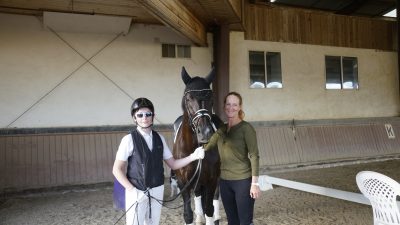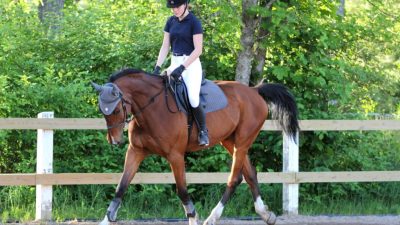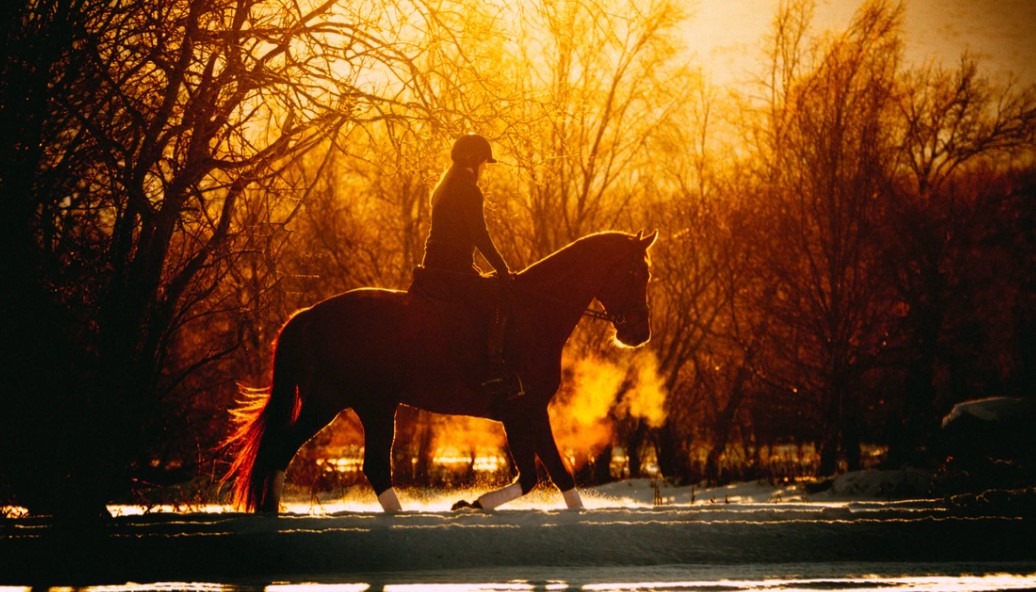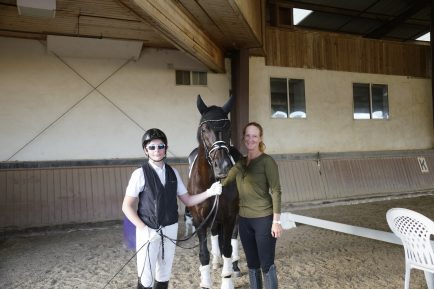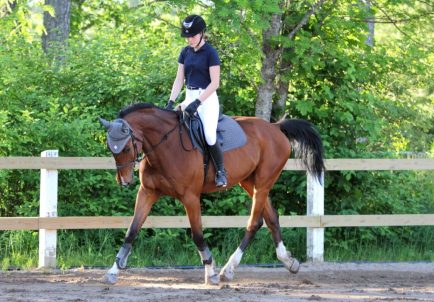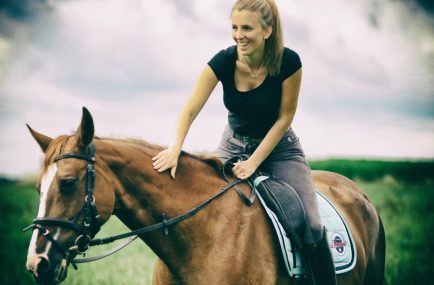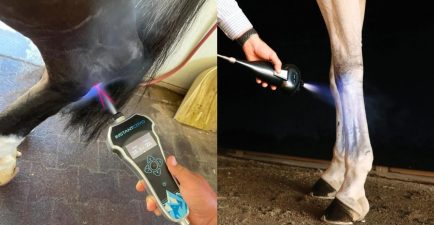Nail your first halt
A good first impression goes a long way in any aspect of life, but so too in Dressage. A super first halt can mean the difference between having to start straight away fighting for those points to push your score back up, or it could be the benchmark to begin your test, like a flirty tease of things to come. Simply looking at it as a halt is not enough. Instead break it up into components –
Entering the arena – have a smooth entrance aimed dead on the centre line with a confident canter (or trot depending upon your level). Concentrate on straightness, the quality of the pace, the contact and of course making sure the poll is he highest point.
The transition to halt – ask yourself am I straight, does my horse respond to my seat and hand aid to sit under to create a smooth transition?
The halt – always have someone watching the halt in training and in warm up. If you look over the side to peer down on your halt, it often results in an unsettled horse and increased possibility to move. The importance of immobility is paramount, and nothing looks worse than a rider fiddling. Unless your halt can be easily corrected with a small aid, make the immobility your goal. Keep your seat balanced and your eyes through your horses ears, focused on what is your next component which is.
The exit from halt – this for me is the most overlooked part of the halt. You must leave the halt precisely, no walk, no showing off with some ridiculously grand gesture to show how long you can keep your horse immobile with some over the top salute that belongs in a bollywood film and a dragged out putting your hat back on. Keep it simple – a graceful salute with a nice flow, a little nod to acknowledge the judges, breathe (it will also help you not look like you are about to attack someone if your are a bit tense and carry this tension in your face), and go. This transition requires a lot of practice and 90% of riders will walk on average 2 steps of walk so work on your responsiveness out of the halt and not only will it help your halt, but your horse as well.
Transitions
A quick glance through the Grand Prix shows 13 of the 33 movements in the Judges directives on the Grand Prix score sheet highlight transitions within the pace, or in or out of a movement as key components to be judged. That is nearly 40% of the movements of a Grand Prix highlighting the importance of a transition. That to me means marks are being wasted, and this is the case whether you are doing a Preliminary test, or a Grand Prix test. This thought is kicked home for me when looking at my own Dressage test analysis, and it is highlighted that it was transitions where I lose the majority of my points…like a few percent lost!!!!!!!. So, practise, practise, practise all your transitions in and out of movements and gaits as that really is the simplest way to help your score!
Accuracy
I was just in Munich helping fellow Aussie Brianna Burgess, and hubby Patrik Kittel. With my focus on the qualifiers, it gave me a great chance to watch a lot of tests as this is not normally possible when I am competing.
What drew my attention like a door slamming in the wind was the lack of accuracy from even some of the top riders. Some diagonals of changes or extensions for instance, ended up a whole marker before!!! To me thats an error of course, but it happened regularly.
Execute each movement, whether it be on a diagonal line or at a particular marker with precision and aim. Focus on the letter you are aiming for and try and maintain straightness, impulsion and accuracy.
If you are doing a diagonal line with a change at the end, it is not supposed to be executed on the wall but on the diagonal itself, so aim 1 metre to the inside of the marker to give yourself sufficient room to do a good change, end the diagonal, to then do a nice useful corner to prepare for the next exercise ahead.
Use your corners
The corner is such a valuable opportunity to correct, and we all have a tendency to fly straight through it focusing on the next marker. Utilise every corner to gauge your balance and self carriage, your power and responsiveness to your aids – taking advantage of the corner to do a small half halt, to put everything together to come out of that corner ready to start the next movement as prepared as you can be.
Visualise
This is so important. Visualise the arena you are riding in – the letters, where the judges boxes are, the surroundings, anything and everything that will make you feel more familiar and at ease in the competition arena. I did this a lot for the Olympics, and it helps so much – even playing the London Games edition of Super Mario with Patrik. It must sound hysterical but it really helped!
Also visualise your test. In real time, go through each movement, sitting down, and emphasise your breathing every time you think about it – it will help in the test I can assure you.
I hope this is of some help. This is what I am focusing on in training right now and I can feel the benefits!
Happy riding!
Original article: Equestrian Life – How to easily improve your dressage test…and your score









